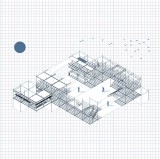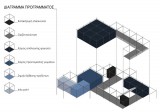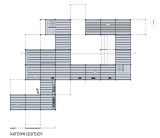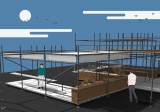The concept of food in the living space is associated with most of human activities, taking into consideration tha fact that in order to live we need energy, which we receive from food. A relationship between food and architecture is detected, but the importance is often overlooked during the designing process. However, the issue of "food waste" is a global issue, as a large percentage of the population is facing food insecurity problems. The question that arises is, how can the architecture respond immediately and design the appropriate infrastructure? When the needs and data of today's society change, and a new normality has been created with the COVID-19 pandemic, the design of the space has to be adaptive. This implies changes in the consuming habits of the people, through informing and raising awareness on the subject.
It is a public intervention, a structure, which will be characterized by an exchange mechanism, through the initiative for food distribution and then food production, including meals preparation. It negotiates the social and economic needs of the inhabitants, through the mechanism of the alternative economy. It redefines the traditional form of the restaurant, giving a new interpretation to the terms producer and consumer. Visitors to the structure become part of a production chain so that it can function. The consumers selects and buys the raw materials, then the meal is cooked in front of them and provided there, in order to strengthen people's relationships.
The structure operates autonomously, co-exists in the market, and on a daily basis collects food excess from markets, restaurants etc. The food distribution community organizes various activities, which are available at the info point of the structure, from where people can be informed about any action. So, a flexible and rapid architecture emerges.
In order for this structure to function in Greece, it "travels" within Thessaly. It is installed in each place for a month, in order to inform the inhabitants, to highlight the local products and to encourage the relations of the community. The uniqueness of the design allows easy and fast assembly, through the flexible scaffolding structure.






